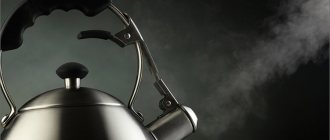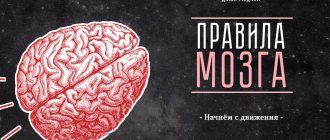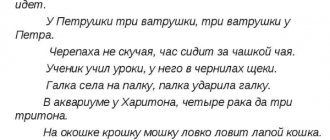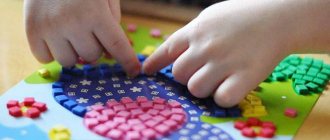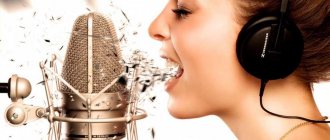Everyone wants to be heard. For a speaker, not only information is important, but also the way it is presented. No one will support the point of view of a person who does not pronounce words clearly, “eats” endings or speaks too quietly.
Diction is correct articulation, clear, intelligible speech that makes it easier for other people to understand what is said. A person with good pronunciation does not lisp, nasal or lisp. Every person has problems pronouncing individual morphemes or sound combinations. And for correct diction, training of the speech apparatus will be required. There are practically no problems with the pronunciation of vowels.
Correct diction is a guarantee of successful employment and communication skills. But good articulation is of particular importance for singers, actors, presenters and teachers. A vocalist with slurred pronunciation evokes double feelings in listeners: he seems to have sung everything correctly, but the words cannot be understood.
Diction is a fundamental element of human culture. Because a person with good pronunciation can convince almost anyone that he is right.
Speech diction
Diction is the clear pronunciation of sounds and words with their correct articulation. The speech apparatus produces sounds, and its violations and defects are the reason that a person’s diction is of low quality.
Speech diction consists of:
- From distinct articulation;
- Correct articulation;
- Manner of pronunciation: tempo and intonation.
Clear articulation - correct and clear pronunciation of sounds. It is thanks to clear articulation that the speaker’s speech is legible and his interlocutors easily understand what he wants to convey. Violation of this indicator of diction may occur due to the physiological characteristics of a person. You can improve the clarity of pronunciation of sounds by training your tongue and lip muscles.
Correct articulation is the coordinated movement of the muscles of the articulatory apparatus. Malocclusions and frenulums have a negative effect on articulation. With such physiological deviations, burr and nasal sound may appear.
Timbre. Often, the manner of pronunciation is influenced by a person’s temperament. The speaker may tend to monotony or speed up his speech. Often it is haste that occurs in people with poor diction. But, as practice shows, almost anyone can “defeat” this problem.
Intonation. As for intonation, it is formed primarily from the ability to clearly pronounce vowel sounds and stress. You can set intonation with the help of some breathing exercises and reading aloud. Improving intonation is very difficult and painstaking work.
Problems with diction in children
A pronunciation defect in children is considered to be a discrepancy between speech and age standards. The following is considered a violation:
- 0-1 month of life: the baby does not cry, even if he feels discomfort;
- 1-4 months: the baby does not respond to speech addressed to him;
- 4-6 months: does not track the toy with the eyes, does not pronounce combinations of phonemes (does not hum, does not coo);
- 6-7 months: does not try to attract the attention of adults by saying anything;
- 7-9 months: pronunciation of simple phonemes is difficult or completely absent;
- 9-10 months: the baby does not speak syllables and does not respond to gestures from adults, does not comply with requests to wave his hand, nod or shake his head;
- 12-18 months: does not speak simple words: dad, mom, give, ball, drink;
- 2 years: no meaningful spontaneous speech.
The norms of speech development are average. All children are individual, so their development may vary. A slight lag is normal. However, it requires attention from parents.
In preschool children, diction disorders such as unintelligibility of speech and inability to pronounce individual sounds are recorded: hissing, whistling or sonorant.
Working on diction and pronunciation
Oratorical talent is extremely rare. Almost all famous people intensively prepare for every public appearance. It is known that Cicero could not utter a single word without preparation. And he is still held up as an example as a great rhetorician.
There are many exercises with which your speech can become clear and beautiful. Among them are both universal exercises and those that are designed to help correct a specific problem. For example, a whistling “S”, an indistinct “L” or a violation in the pronunciation of the sound “R”. In order to solve these problems you will have to work.
Types of rotacism
Researchers' opinions regarding the forms of rhotacism and their number in domestic speech therapy vary. Some authors identify over 30 variants of sound disturbance. The most common types of rotacism recognized by most scientists are:
- Uvular
. During phonation, the uvular process (small tongue) trembles. A “grassing” [P] is heard, acoustically closest to the normal sound. - Velar.
The soft palate vibrates, resulting in a rough rumble. Velar and uvular rhotacism are sometimes called guttural [P], or burr. - Side.
Vibration of the lateral edges of the tongue is noted. The sound combination “RL” is heard - Buccal.
A stream of air passes between the cheeks and the edges of the tongue, causing vibrations of one or both cheeks. With this type of rhoticism, noise is mixed into the tone of the voice. - Single-strike
(protosty). The tongue is in the correct position, but vibration does not occur. The result is a sound that is acoustically close to English [D]. - Bilabial
(bilabial, “coachman”). The lips vibrate, the tongue is motionless. With bilabial rhoticism, “PRR” is heard. - Nasal.
The air stream comes out through the nose, the tip of the tongue is not involved in articulation. The audible sound is close to the distorted combination “NG”. - Guttural.
It is close to velar rhotacism, but the sound is more muffled, similar to the fricative sound [G].
Exercises for diction and voice
When speaking in public or during normal conversation, we use the muscles of the tongue and throat. It is logical that in order to speak beautifully, you need to “pump up” these muscles.
Exercises that will help prepare the necessary muscles:
- You can pump up the muscles involved in producing sounds by regularly pronouncing “A-E-O”. At the same time, it is important to try not to open your mouth too much. The effect can be achieved by pronouncing sounds as deep as possible in the oral cavity.
- A very good effect can be achieved in diction and by training your lips. To do this, you need to say: “GL”, “VL”, “VN” - for the upper lip and “KS”, “GZ”, “VZ”, “BZ” - for the lower lip.
- You can also shape your tongue into a shovel shape and say “I” and “E” several times. Now let’s give the tongue a hook shape and simultaneously pronounce “O” and “U”.
- We continue to “pump up” the muscles of the tongue. We close our mouth and, using internal movements of the palate, cheeks and lips, make the sound “M”.
Do you need a doctor for problems with diction?
In most cases, if diction is impaired, they turn to a speech therapist. However, it is also worth consulting with your dentist and facial surgeon. The latter will rule out bone tissue pathology, prescribing surgery if necessary. The cause of unclear diction may be ankyloglossia, a congenital anomaly in which the frenulum of the tongue is underdeveloped. If the defect does not disappear on its own during preschool age, surgical intervention is necessary.
The dentist will sanitize the oral cavity and evaluate the dentures. Installing a denture that is too tight or too small changes the anatomy of the jaw, impairing diction.
When a malocclusion is diagnosed, the patient is fitted with a mouthguard, plate or braces. Depending on the severity of the disorder, eliminating the pathology will take from six months to several years. Correcting the bite improves articulation and voice timbre.
An examination is not always enough to detect the pathology that provoked a violation of diction. To clarify the diagnosis, the doctor refers the patient to clinical and instrumental studies:
- CT (computed tomography) or MRI (magnetic resonance imaging);
- X-ray examination of the skull;
- general blood and urine analysis;
- examination of hearing and phonetic perception of oral speech.
Additionally, consultation with a neurologist and otolaryngologist may be required. The latter will exclude problems with hearing and ENT organs. And the neurologist will check whether the violation of diction is associated with improper functioning of the brain.
Exercises for diction and articulation
Since the tip of the tongue is actively involved in clear pronunciation, we use exercises that develop its flexibility:
- Imagine that your tongue is a hammer and hit your teeth with its tip. During such blows, “pronounce” yes-yes-yes-yes. Then try to clearly pronounce the letters “T-D”.
- To clearly pronounce the letters “K” and “G” you need to “pump up” your larynx. To do this, inhale through your nose and completely empty your lungs through your mouth. The release of air through the mouth should occur sharply and resemble the sound “Fu”. Do this exercise several times.
- If you notice that you have a problem pronouncing the letters “P” and “B,” then train your labial muscles. To do this, you need to puff out your cheeks and release the air from your mouth with a vigorous clap.
- It is also very important to learn how to control the amount of air. To do this, you need to use breathing exercises and practice in front of a mirror. Try reading a short text at normal volume. As a rule, you can easily control your voice. Now, do the same, but increasing the volume. There must be problems.
Phonetic characteristics of sound [P]
The sound [P] is consonant (based on the presence of an obstruction), sonorant (based on the participation of voice and noise), anterior lingual (based on the place of formation), tremulous, or vibrant (based on the method of formation), oral (based on the place where air is released). For correct articulation of an isolated solid sound [P] it is necessary:
- open your lips;
- open your teeth;
- raise the tongue in the shape of a “cup” by the upper teeth onto the alveoli;
- exhale air forcefully onto the tip of the tongue, causing it to vibrate.
During phonation, the soft palate rises and closes the passage into the nasal cavity. The vocal folds are closed and vibrate – the sound is ringing. When pronouncing a soft [P′], the tip of the tongue moves closer to the incisors, the back of the tongue rises higher to the palate. The sound is short, single-beat.
Rotacism
Correction
Correction of rotacism is carried out using speech therapy. In some cases, medical attention may be required. So, if with the help of special exercises it is not possible to stretch the frenulum of the tongue, they resort to surgical plastic surgery. In case of malocclusion, the orthodontist will prescribe the wearing of removable appliances, braces or aligners. Correction of the dysarthric component in a child’s speech is more effective with drug therapy prescribed by a neurologist.
The main work to eliminate rotacism is carried out in the speech therapist's office. It includes several periods: preparatory, sound production, its automation and introduction to speech.
Preparation period
A child or adult suffering from rhotacism is introduced to the correct articulation when pronouncing the sounds [P] and [P']. For this purpose, visual aids are used (articulation profiles, oral cavity models). The speech therapist repeatedly pronounces an isolated sound and makes associations with the “roar of an engine” or the “roar of a tiger.”
In parallel, work is underway to form the correct structure of the articulation organs and develop directed exhalation. The main objectives of articulatory gymnastics:
- development of the upper elevation of the tongue (exercises “Painter”, “Delicious Jam”, “Swing”, “Turkey”);
- activation of the tip of the tongue (“Woodpecker”, “Brushing teeth”, “Iron”);
- calling vibration of the tongue (“Komarik”);
- stretching of the hyoid ligament (exercises “Mushroom”, “Sail”, “Horse”, “Accordion”).
At the same time, breathing exercises are performed, and, if necessary, speech therapy massage. Articulation and breathing exercises for rotacism must be practiced not only in speech therapy classes, but also at home at least 2 times a day. The preparatory stage continues until the child learns to maintain the desired articulatory position and exhale a strong, directed air stream.
Sound production
For different variants of rotacism, it is advisable to use differentiated sound production techniques. Standard pronunciation can be achieved in the following ways:
- by imitation (depict the croaking of a crow, the roar of a motor, the growl of a tiger);
- from the supporting sounds [D], [Zh], upper lingual [Z];
- from the sound combinations “td”, “j”, the syllable “for”;
- from articulation exercises (“Mushroom”, “Sail”, “Woodpecker”, “Camel”);
- with mechanical assistance (most often). Vibration of the tip of the tongue is caused using a placement probe or probe substitute.
Sometimes (for example, with buccal rotacism) the sound is produced in 2 stages: first, a proto sound is achieved, then it proceeds to the development of the vibration component. In extreme cases (if the standard sound is unattainable), they resort to compensatory articulation. The soft sound [Р′] is caused after the automation of the hard phoneme by combining it with iotated vowels or [I].
Automation
Consolidation of correct sound pronunciation is carried out with gradual complication of speech material. First, syllables and syllable series are used (direct, reverse, with consonant clusters). Next they move on to words where the sound is in different positions (at the beginning in the stressed position, at the end and in the middle of the word). Then they practice phrases and sentences, pure phrases, saturated with the sound [P]. In conclusion, poems and stories are taken into work.
The duration of the full cycle of correction of rotacism can vary over a wide range (from 1.5 to 3 months or longer). This depends on many factors: the cause of the disorder, the child’s functional capabilities, the parents’ interest, the regularity of classes, the skill of the speech therapist, and the need for concomitant treatment. The most difficult thing to achieve is stable correct sound pronunciation with dysarthria - in these cases, correction of rhotacism and other sound distortions can take months and even years.
Diagnostics
Rotacism is diagnosed during an assessment of speech status. In a preliminary conversation with the child’s parents or an adult suffering from this speech problem, a speech therapist finds out the anamnestic information, language status (monolingual, bilingual). Then the following is carried out sequentially:
- Examination of articulation organs.
During the examination, the structure of the lips, dentition, tongue, hard and soft palate is assessed. Existing deviations (missing teeth, malocclusions, short frenulum, facial clefts, etc.) indicate the cause of rotacism. Then muscle tone is determined: the presence of spasticity, paresis of the oral and facial muscles, dystonia. - Study of the mobility of the articulatory apparatus.
For the articulation of the sonor [P], precise movements of the tongue and lips are important. During the performance of special exercises, the volume, tempo, accuracy, switchability of movements, and the ability to maintain an articulatory posture are determined. - Phonemic hearing research.
To correctly understand the cause of rotacism (motor or sensory insufficiency) and to identify a secondary disorder of auditory differentiation, a speech hearing test is performed. They study the differentiation of isolated sounds, at the level of syllables and words. - Sound pronunciation examination.
The presence and correct pronunciation of sounds is checked in isolation and in different positions in the word. During diagnosis, it is necessary to accurately determine the type of rhotacism - the corrective route will depend on this.
In some cases, in order to develop the correct strategy for eliminating rotacism, additional dental examination (teleradiography, taking diagnostic impressions) or neurological diagnostics (ENMG, MRI of the brain) is required.
Speech therapy massage
Content
- Components of diction
- Why do you need good diction?
- Causes of poor diction
- How to develop diction
- Exercises to improve diction and clarity of speech Warm-up
- Pronunciation of individual sounds
- Breathing
- Tongue Twisters
- Diaphragm training
The absence of one or more teeth leads to malocclusion
If we see adult patients, then, as a rule, the malocclusion pathologies that we most often encounter are associated with the absence of one or more teeth for quite a long time.
Is it necessary to correct the bite in such cases? Yes! If this situation is not corrected immediately, the teeth begin to move. Even if everything was fine with a person, but for some reason a tooth was removed, the teeth begin to move towards the defect of the missing tooth both in the lower jaw and in the upper jaw. The Popov-Godon effect develops.
What bite problems occur in this case?
Interdental contacts are disrupted, contacts between the upper and lower teeth are disrupted. Plus, a person begins to chew more on one side, that is, different muscle activity results, and the situation in the TMJ joint also changes.
And we work with all this and involve related specialists.
Orthodontics must be carried out, that is, we must return the teeth to their previous position, restore the missing tooth with an implant, as a rule, and then at the very end, if the teeth are worn out, the patient is transferred to an orthopedist.
By the way, if we talk about an orthopedic dentist, then the bite can be perfectly corrected with crowns - especially in the height of the bite. But high-quality primary treatment must be provided by an orthodontist.
Features of correct pronunciation in adults
A common flaw in adults is unclear diction. And this is not necessarily due to congenital defects. In the speech of an adult, you can often hear the sounds of “nucking,” a drawn-out “uh,” swallowing of endings, or simply unintelligible words. Therefore, often the main reasons for hasty and unclear presentation are:
- Poorly developed articulatory muscles;
- Problems with voice production;
- Incorrect technique and tempo of speech;
The peculiarity of the development of diction in adults is that instilling correct pronunciation is much more difficult than in children. If for a long time some sounds were pronounced incorrectly, then it will take a long time to get used to the new pronunciation. It is necessary to constantly control yourself, overcoming the psychological barrier.
Actors, TV presenters, and announcers constantly improve their diction by resorting to certain exercises and training:
- Regular exercise of the speech apparatus;
- Reading books, texts aloud and speaking tongue twisters;
- Systematic repetition of complex sound series;
- Listening to recordings of your speech on a voice recorder.
How often is orthodontic treatment needed?
As an orthodontist with more than 20 years of experience, a large number of patients pass through me. But even with my experience in orthodontics, I meet people who refuse to believe and do not understand the whole situation with the malocclusion of their teeth.
In our team of dentists, we also specialize in orthodontics. After all, a person often comes to dentistry simply with a problem of caries or pain, and then the doctor, without actually imposing anything on him - without selling, tells him “everything as it is,” and the patient falls into a stupor, thinking “well, how can this be! I just came to put a filling...”
Let's talk about the ability of patients to recognize the problem of malocclusion. And also - why correct the bite and how to correct the bite.
In fact, many people are not prepared for what the doctor will tell them.
With such patients one has to follow a certain pattern of behavior. That is, we meet for the first time, I tell him that the person heard something, he has not yet realized it.
Then he comes the next time, we repeat this conversation, only with details, and until I see that the person himself wants to change something in his body, until he himself wants it, I do not take him into treatment. Why? Because everyone knows that 50% of the success of treatment depends on the patient himself; if he is motivated and wants to understand how to correct a malocclusion, everything will work out; the doctor alone cannot do it.
Often in our practice, especially with adult patients, we use an interdisciplinary approach together with surgeons, implantologists and orthopedists. Because, as a rule, when a patient seeks orthodontic treatment, it turns out that there are still a number of issues that need to be resolved with doctors of other specializations. At this moment, we do comprehensive consultations that last an hour and a half, and as a result of this consultation, our patient has an understanding of what will need to be done in order to achieve the desired result.
Causes of malocclusion
How and why does malocclusion appear? And are there any ways to protect a child’s teeth at a very early stage of development of the dental system?
Let's start explaining what malocclusion is and what its types are.
Malocclusion is a fairly broad topic. It is best to start with bite prevention in children. So,
Prevention of bite in children
From the first days of a child, from infancy, breastfeeding is very important, because today it is recommended to feed a child for 6-9 months, the baby tries, sucks at the breast, his muscles work - his jaws develop. That is, with insufficient muscle activity, underdevelopment of the jaw bones occurs, which subsequently leads to more difficult to correct situations at later stages of the child’s development.
Because if a child’s jaw is underdeveloped - the teeth have grown and there is not enough space for them, then you need to think about what to do, so prevention and observation must begin from infancy. There are, of course, situations when the mother does not have milk, in which case it is better to choose bottles and nipples that are difficult to suck, so that the milk itself does not flow.
At what age should a child begin seeing an orthodontist?
It would be correct to show a child who is one year old to a doctor, if he does not have any anomalies - to an orthodontist. And the orthodontist will say that we wait until the child has all his teeth, and then we will take or not take any action.
Of course, if a child has caries, then we take every action to alleviate this situation, even going so far as to show mothers how to brush their teeth correctly, and children take an active part in this.
Our team of specialists includes doctors who see children. Now this age is from 6 years
.


